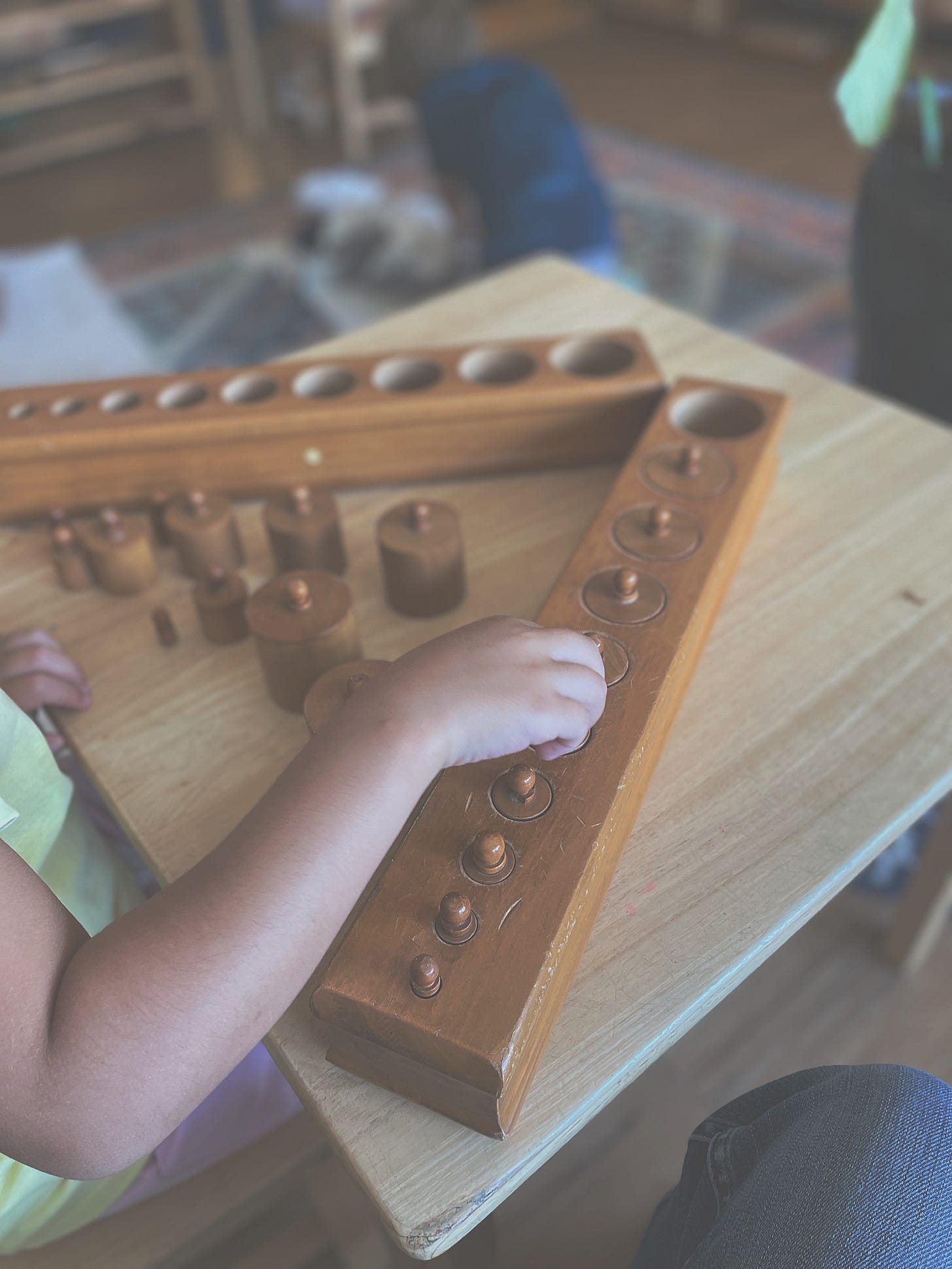Exploration is a human tendency, too
How can we support human tendencies like exploration without the classroom becoming chaotic?
“The urge towards growth lies within the child themself – their intelligence and character will grow whatever we may do, but we can help or hinder the growth.” Maria Montessori, Maria Montessori Speaks to Parents.
Hi there! It’s been a minute. I won’t wax poetic about the challenges and joys of opening a tiny Montessori school (I can’t wait to share more about this on a different day!). I’m here to talk about human tendencies, specifically exploration. So, let’s get right to it.
I have had a lot of great conversations about human tendencies lately. Are you familiar with the Montessori theory of Human Tendencies?
Maria Montessori believed that it was tendencies, not instincts, that guided human development, and Mario Montessori, the son of Maria Montessori, wrote at length about human tendencies. Mario traced these tendencies back to the survival of the earliest humans. These tendencies towards things like orienting, exploring, and communicating have guided the evolution of human beings. A prepared environment is designed so that children, in all planes of development, can act on their human tendencies.
Today, I want to talk about the human tendency toward exploration. In a Montessori school, exploration widens as the child grows, with the earliest opportunities happening with sensorial exploration. Early humans explored to expand opportunities for food and resources. Today’s humans explore beyond meeting their basic needs. Now, we tend to explore creatively, emotionally, philosophically, and spiritually.
At the beginning of the year, there is a huge focus on orientation, another human tendency. We make sure children have time to orient to their new environment. We make sure they have all the information they need through what feels like endless grace and courtesy lessons at the beginning of the year. We observe their needs and respond. Supporting a young child’s tendency toward orientation requires so much follow-through, which explains the exhaustion at the start of the school year.
But as the new school year stretches into September, things start to feel more comfortable. The children are finding their way around the classroom and getting to know one another. Once they have oriented themselves to a new environment, new people, and a new routine, are we giving them the freedom they need to act on their tendency to explore?
In a 3-6 Montessori classroom, here is how young children may act on their tendency to explore.



